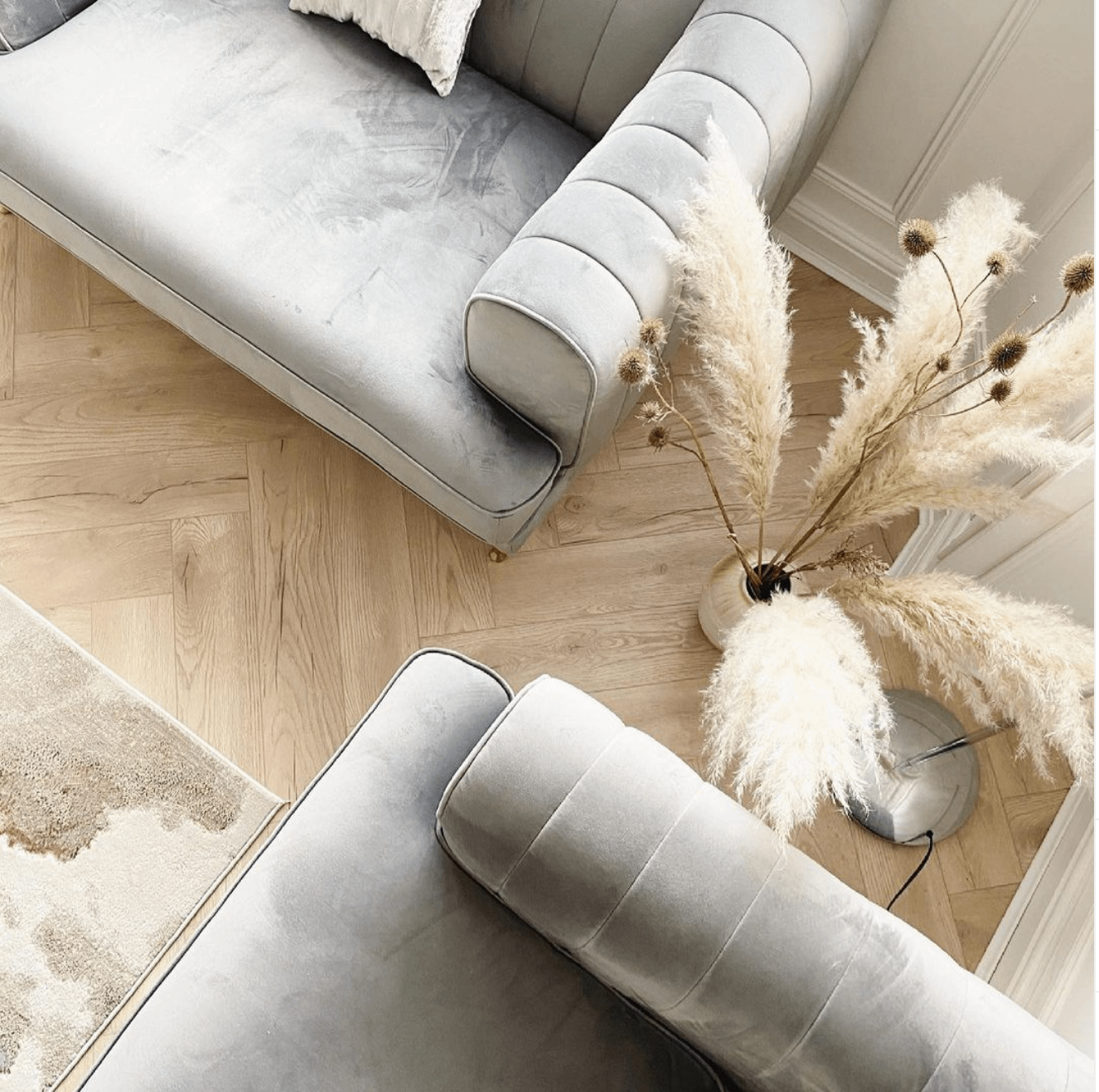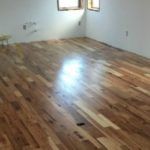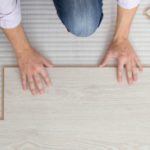Originally posted 8th June 2021
Last updated 14th March 2024
What Is Laminate Flooring?
Laminate is incredibly popular type of flooring by offering the aesthetics of real wood floors...

Laminate is incredibly popular type of flooring by offering the aesthetics of real wood floors without the high cost and need for skilled fitting or maintenance. Laminate allows your floor to be more water-resistant than solid wood, so you needn’t worry about the occasional spill. If the worst should happen and your flooring does undergo extensive damage, a quality laminate floor is affordable and easy to replace. It comes in a variety of shades too from light oak laminate flooring to darker tones.
What is laminate made of?
Laminate flooring is a synthetic flooring option made up of four main layers. The top layer, also known as the wear layer, provides durability and resistance to scratches. Beneath that is the decorative layer, featuring the visual design, which can replicate the look of wood, stone, or other materials. The core layer comes next, providing stability and strength. Lastly, the bottom layer, or backing layer, adds extra support and moisture resistance. Together, these layers create a durable and cost-effective flooring choice that can mimic the appearance of various materials.
How durable is laminate flooring?
Laminate flooring is tough and practical. It's built strong with a sturdy core and a protective layer, so it can handle the hustle and bustle of daily life. No need to worry about heavy furniture leaving dents – laminate can resist impacts like a champ. It's great for homes and even light commercial spaces that get a lot of foot traffic. Plus, it's water-resistant, so spills in busy areas like hallways are no big deal. In the world of durable flooring, laminate is the reliable option that keeps your space looking good and standing up to whatever comes its way.
What are the pros and cons of laminate flooring?
Below, we guide you through the pros and cons of laminate flooring, unveiling both its remarkable benefits and considerations for informed decision-making.
Pros
- Easy to Clean: One potential drawback is its lower resale value compared to premium flooring options. While it provides a cost-effective solution initially, you should be aware that it may contribute less to the overall perceived value of a property during resale.
- Scratch Resistance: The tough wear layer of laminate flooring makes it highly scratch-resistant, making it an excellent choice for households with pets and children.
- Self-Installation: Ideal for DIY enthusiasts or budget-conscious homeowners, laminate flooring boasts a user-friendly installation process, eliminating the need for professional assistance.
- Inexpensive: Cost-effective compared to other flooring options, laminate remains an affordable choice for a wide range of budgets, offering a balance between quality and affordability.
- Durability: Renowned for durability, laminate flooring stands up well to daily wear and tear in both residential and light commercial settings, ensuring a long-lasting and reliable flooring solution.
Cons
- Lower Resale Value: Laminate flooring simplifies cleaning with its seamless surface. Routine maintenance involves dry mopping or sweeping, while a hard surface mopping tool with cleaning fluid is recommended for deeper cleaning.
- Not Suitable for All Rooms: Laminate flooring may not be the ideal choice for all rooms, particularly those with high moisture levels. Areas like bathrooms or laundry rooms, are prone to increased humidity and water exposure, due to the risk of water damage.
- Susceptible to Water Damage: Prolonged exposure to moisture can lead to warping or swelling of the planks. It is essential to take precautions and avoid installing laminate flooring in areas prone to spills or water leaks.
- Difficult to Repair:Repairing laminate flooring can be challenging, especially when compared to other flooring materials. In the event of damage, such as scratches or dents, the options for repair may be limited. This aspect should be considered when evaluating the long-term maintenance and durability of laminate flooring.

@CherryBlossomAbode
What are the different styles and colours of laminate flooring?
Laminate flooring comes in a wide array of colours and styles, allowing you to choose from rustic wood finishes, sleek stone appearances, or timeless and neutral options to complement your interior design preferences. Laminate flooring comes in a variety of styles, but also in a variety of colours within those styles. This versatility makes it one of the most popular flooring types for homes that need a lower cost, durable but still stylish and versatile flooring that works with existing decor.
Not sure how to choose the right colour of laminate? We've written a guide about how to choose the right colour of laminate for your home.
How to install laminate flooring
Discover the simplicity of installing laminate flooring with this concise guide, tailored for DIY enthusiasts of all levels. Our article walks you through the essential tools and key steps, to ensure a successful installation. From the initial preparations to the final touches. For a detailed guide, explore our article on How to Install Laminate Flooring.
How to maintain laminate flooring
- Daily Vacuuming: Keep your laminate flooring looking great by vacuuming every day. This helps get rid of dust and bits that can scratch the surface. Regular vacuuming not only makes it look nice but also helps the floor last longer.
- Weekly Damp Mopping: Give your laminate floor a good clean by mopping it with a damp mop once a week. This helps remove dirt and tough stains, making your floor look fresh and new.
- Caution when cleaning with water: Be careful with water on your laminate floor. Wipe away spills right away and don't let water stay on the floor for too long. Laminate doesn't like water too much, and being mindful of this helps prevent any damage.
- Avoid Harsh Scouring Devices: Don't use rough cleaning tools on your laminate floor. Abrasive materials can hurt the top layer of the floor. Stick to gentle cleaning to make sure your floor stays strong and doesn't get scratched easily.
- Lift Furniture, Don't Drag: When you move furniture around, lift it instead of dragging it. This simple step helps avoid scratches and keeps your laminate floor looking nice. By being gentle with your furniture, you help your floor last longer and stay in good shape.
Read our article that provides the best tips on keeping your laminate flooring in good condition.
The different thicknesses
Laminate flooring comes in a range of thicknesses, ranging from 6 millimeters through to 12 millimeters. The thickness of laminate flooring does not determine its durability, more so its suitability to fit the available floor space.

@cherryblossomabode



